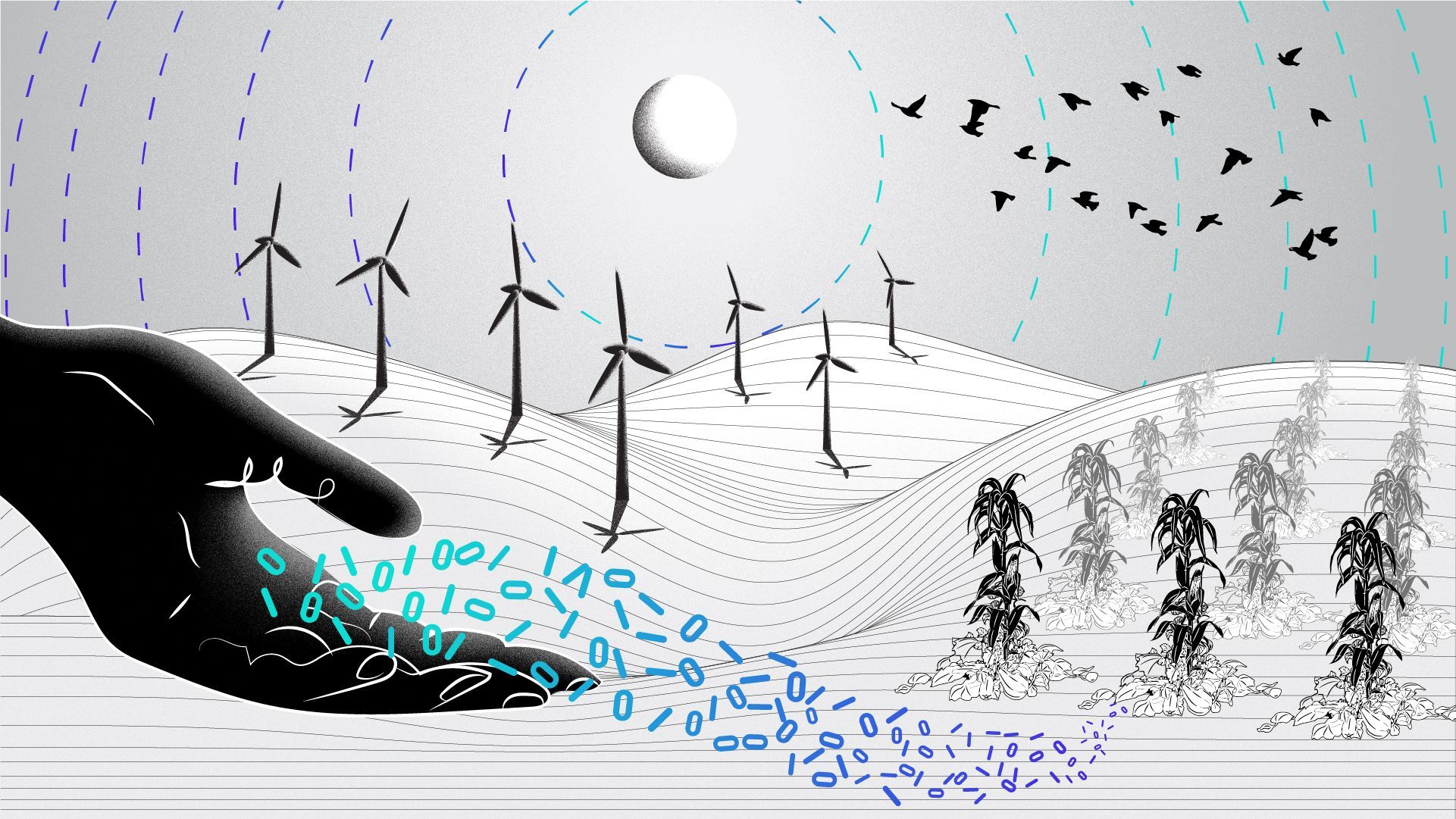The first article in this three-part series explored unenclosability as an essential property of non-corruptible communication channels. We suggest heading there, if you haven’t already, before reading this article.
This piece explores what becomes possible in a world of unenclosable carriers. Which is not an easy thing exactly, because really what becomes possible in such a world is an explosion of innovations, the evolution of entirely new social patterns that are beyond what we can predict through the lens of existing ideas. Just as it’s hard to speculate on the kinds of biological organisms that will thrive a million years from now, we can’t really guess at what social organisms will be most useful in the next 10 or 20 years once no holds are barred.
Still, if we can’t fully paint a picture, maybe we can at least offer a palette sufficient to inspire a sense of what’s possible. As we do, we’ll find out that the prospect of a world built on unenclosable carriers (Holochain or otherwise) isn’t just exciting; it’s completely necessary for people and planet to thrive in the coming generations. Maybe that’s a bold claim, because it amounts to saying that an unenclosable carrier system is a key ingredient in, well, saving the world. And yet it’s what our analysis indicates, so we’d be amiss if we didn’t state the matter clearly and directly. If the boldness of the claim intrigues you to read on, all the better.
We offer the palette by considering well-known, far-reaching challenges in four domains: food production, energy production, money systems, and planetary stewardship. Within each, we look at how the challenges may actually be symptoms of broken or outdated underlying architectures – patterns of carrier enclosure that were created for good reasons but have actually painted us into a corner such that there’s no way out except to shift the architectures themselves. We then consider a number of alternatives, either experiments already underway or ones we can easily imagine, that gesture in the direction of what’s possible in a world of unenclosable carriers.
Alright, let’s dive in.
1. Restoring the Quality of Our Food
The problem:
The nutritional content per calorie of the modern diet has declined significantly over the last 100 years, thanks to the predominance of ultra-processed food, the filling of many mass-produced products with simple carbohydrates and non-nutritional fillers, changes in varieties of crops grown to increase yields, and a decline in the quality of fresh food as a result of soil depletion [1] [2] [3] and possibly even increased carbon in the atmosphere.
But what if…
…these problems are actually symptoms of structural issues with the very mechanisms by which food is created, sold, and distributed? What if the soil is depleted and the food is overprocessed because of enclosed-carrier dynamics that have created big-ag and big-food giants who control much of the market — and whose incentives are directly misaligned with our nutritional needs?
Independent family farming used to be much more common [1] [2] [3] [4] [5]. But increased centralization throughout the food markets have made it more difficult for farmers to survive without growing big. “Get big or get out,” said Earl Butz, Richard Nixon’s Secretary of Agriculture said in 1973. Today, it’s the largest growers — or at least the ones that subscribe to the big-ag programs for seed, feed, fertilizer, and distribution — that enjoy reliable access to the financing needed to compete at scale. And garnering space at grocery chains, even at the more principled ones such as Whole Foods, often requires 6-figure slotting fees and the ability to produce at massive scale.
Want to ‘buy local’? Good luck: you’re limited to what’s available during the growing season in your area, and you’ll pay more than at the supermarket because local growers generally can’t come close to matching mass-produced pricing. Want to go organic? Studies suggest that the herbicides known as glyphosates — which Monsanto markets as Roundup, and which the World Health Organization has concluded is “probably carcinogenic to humans” — make their way into water supplies and even organic crops.
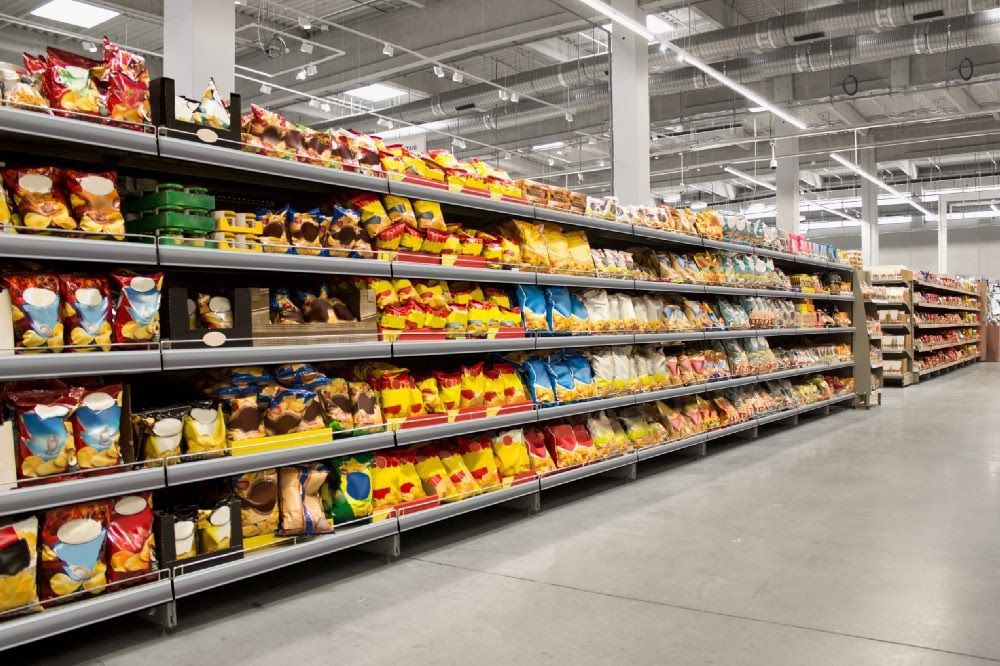
Our access to food is controlled by centralized market players that we don’t get to choose. Mega-corporations like Kraft & Nestle control companies up and down the whole supply chain. Shelves at supermarket chains display the products that most serve the interests of the industry’s major stakeholders, and those products are filled with ingredients that do the same. Farmers are paid simply for pounds of yield, so they understandably favor the cheapest way to achieve high outputs, without regard to the nutritional content of the food or the harmful effects of chemical herbicides or fertilizers.
And regulators and legislators, many of whom are former big-ag executives or at least receive campaign funding from them, naturally favor centralized interests over those of independent growers.
Food quality inevitably declines as profit-driven companies race to the bottom in a quest for ever-cheaper sources and ingredients, with governments incentivized to cheer them on.
An alternative future is possible.
The explosion of labels and certifications like “organic/bio”, “fair trade”, “free-range”, “hormone-free”, “cage-free”, and so on point to the info-age demand for more visibility into the flows and processes that define our food production. A newer generation of certifications focus on “sustainable” growing practices and even “regenerative” ones, meaning they restore the health of ecosystems that have been degraded through industrial farming or other industry.
Labels may be only partial indicators — organic food can still come from depleted soil, for example — but at least they move the industry in the right direction. And they point to an opportunity to create massively greater accountability in our food supply chains, incentivizing producers through market dynamics to do right by the consumers.
Yet supply-chain transparency and consumer information really only works at scale in the case of carrier unenclosability. Without it, certifications themselves can easily become stale or corrupt. The ability to create a new certification standard needs to be like creating a new turn of phrase in a language: anyone can do it, and the expression spreads if it’s useful, rather than being subject to centralized (government or corporate) oversight over what takes hold. This way, any community can invent, evolve, and enforce the kind of quality assurance that it needs.
One promising example is the Just One Organics Living Economy System (JOOLES), which plans to incentivize regenerative, high-nutrition growing practices by creating a feedback loop directly within the economics of food production. Growers who maintain high soil standards (as verified by spectroscopic analyses of the nutritional content of their produce) gain access to valuable contracts for their grade-B produce known as ‘seconds’ as well as interest-free credit lines that they can use to increase their growing capacity.
The implications are game-changing.
Today, even as healthier growing practices become theoretically more profitable as a result of rising consumer demand, many farmers remain entrenched in low-nutrition, high-chemical growing practices because they lack access to the funding required to shift their operations. It’s the biggest agriculture companies that have access to the cheapest funding, and they make that funding available only to growers who buy the company’s products, sell the company their outputs, or both. Low-quality, high-yield agriculture remains dominant, at least in part, because existing powers have an incentive to perpetuate their already-profitable practices, despite their destructive impacts and growing consumer appetites for something different.
Projects like JOOLES have the potential to flip that script by linking quality-oriented producers directly with funding from quality-oriented consumers. And doing so using a framework like Holochain ensures that, while money can flow to companies who create value for consumers, no one will be able to concentrate power by virtue of saying who can or cannot transact or collaborate. In a world of unenclosable carriers, consumers will be empowered to continually invent new structures to incentivize the nutrition they actually want, free from the enclosures of entrenched interests that seek to extract short-term profits.
2. Solving the Energy Crisis
The problem:
Humans are using the planet’s energy stores faster than they can replenish. This appears to be a function of our reliance on cheap, finite stores of fossil fuel to power an ever-hungrier array of industry, combined with the difficulty of bringing online alternative energy solutions in a cost-effective way. Despite massive sums spent on research and development over many years, we remain drastically ill-equipped to meet energy demands in the coming post-fossil-fuel era.
But what if…
…this problem is actually a symptom of a centralized energy economy in which entrenched powers have strong incentives to keep us reliant on how we harvest and distribute energy today rather than scale up viable alternatives?
Consider, for example, how the utility monopolies have used their influence to protect themselves against competition from renewables. They have worked to curtail production of solar power in homes by lobbying to eliminate tax breaks for solar installations. When ‘net-metering’ legislation has been introduced to require that utility companies pay consumers for surplus power produced at home, energy companies have lobbied against it and successfully eliminated it in several U.S states, in some cases doing so explicitly on the grounds that solar proliferation could hurt their profits. Even U.S. government agencies have moved to protect the fossil fuel industry from competition by alternative energy sources, pursuing policies to discourage utility companies from investing in renewables.
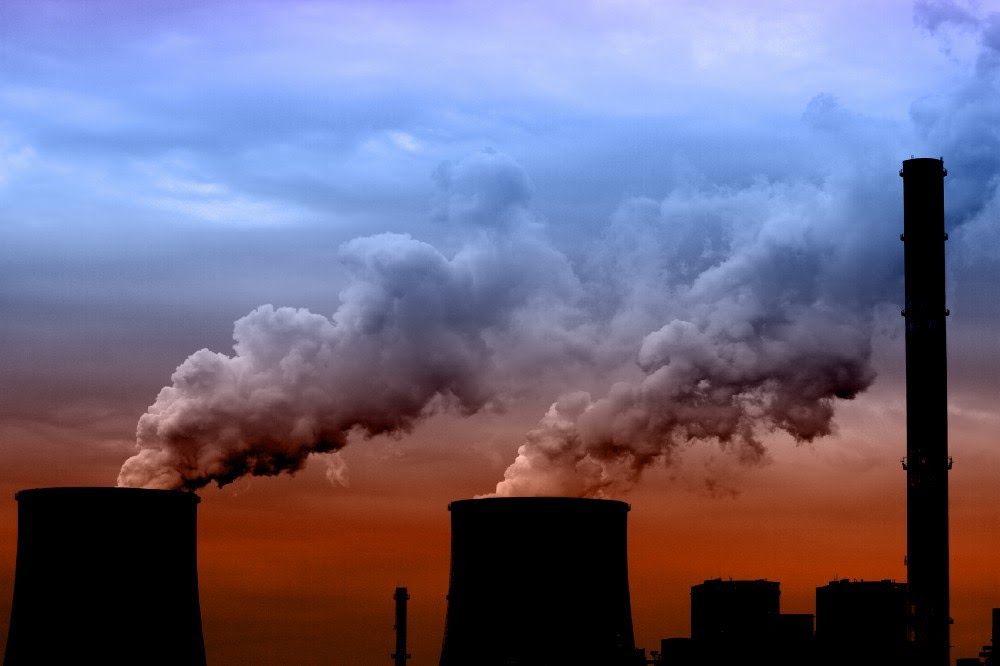
Or consider how oil-industry power brokers in both the private and public sector worked to undermine the development and adoption of early electric cars in the early 2000s in the United States, including through disinformation and astroturfing, because electric vehicles threatened oil company profits.
These kinds of counterproductive scenarios, commonplace as they may be, are not necessary. They are consequences of how the flow of electricity is enclosed by centralized power brokers as it moves across the world. There may have been good reasons to allow for those enclosures at the time, such as reliability and scalability, but when building on unenclosable systems like Holochain, it’s actually possible to have it both ways: clean-energy projects that have the resources for large-scale impact and are immune to corruption by proprietary business interests.
An alternative future is possible.
There is actually an abundance of innovative energy solutions in existence today, and there is promising research into new solutions for tomorrow. The challenge is circumventing the destructive grip the leading energy corporations have on the market that keeps innovations from proliferating. If communities of consumers, researchers, property owners, and entrepreneurs were able to collaborate and transact with true freedom, we could rapidly evolve new approaches to our energy problems.
Here are just a few kinds of solutions waiting to spread their wings in an unenclosable system:
A. Self-owned, self-generated power: the production of power on one’s own property, for one’s own use. One recent study found that residential solar production alone could supply around a quarter of the United States’ total energy needs. Add in the rest of usable rooftop space nationwide and you get to 39%, while California, where it’s especially sunny, could produce 74% of its power just through solar on existing rooftops.
B. Peer-produced power and micro-exchanges: the sharing of self-generated power across peer networks, with payments made through unenclosable currencies from those who net-consume power to those who net-provide power. Imagine if everyone were simply buying and selling electricity to one another – harvested from sun, wind, and rivers – with absolutely no centralized entity brokering or extracting value from those transactions. This ‘Internet of Energy’ is what Redgrid, powered by Holochain, aims to create.
C. Smart grids: comprehensive restructuring of power grids to increase efficiency and decrease fuel usage, required infrastructure, and pollution. Smart grids involve different components (such as appliances, meters, and power conditioners) ‘talking’ to each other and taking actions that reduce or balance system loads across time. For example, a smart grid might cause air conditioners at neighboring buildings to ‘take turns’ cycling on and off, thereby reducing spikes in overall usage and, in turn, reducing the amount of peak power that the grid needs to be built to provide. Today, energy companies have incentives to suppress smart-grid technology since it threatens their current business models, but in a world of unenclosable carriers and open energy exchanges, micro-markets could emerge where small players compete to establish healthier patterns of energy use.
D. Novel developments in energy production. In a climate of unfettered research and development, resources could also flow to a variety of promising energy research frontiers (beyond wind and solar) that make sense to pursue but are today disregarded as fringe by centralized economic channels. Waves, tides, geothermal sources, deep ocean water, and even fusion, cold fusion, zero-point energy, and over-unity devices have yielded promising discoveries which have been shelved or blocked within today’s centralized energy climate. With peer-production and smart grids in place, it could become economically feasible to create a ready evaluation path and an open market for every garage inventor’s creative energy solutions.
The implications are game-changing.
The very idea that energy production needs to be centralized is actually fairly new. During the early industrial age 150 or 200 years ago, you didn’t need to plug into a centralized, monopoly-owned grid to run your factory; you just needed a river to turn your belts. Even steam engines that ran trains and turned heavy equipment could run on wood harvested and renewed within the local forest.
As foreign as it may sound today, decentralized power production was once the norm and could easily be again, sending centralized facilities the way of industrial-age relics like broadcast TV service, print-newspaper conglomerates, and the U.S. Postal Service. This is especially true now because we have technologies not just for producing large amounts of energy locally, but also for efficiently distributing and transacting for it across peer-to-peer networks. Add in the possibility of major funding sources being directed to mainly support, rather than suppress, the scaling of clean energy solutions, and we have a whole new ball game when it comes to powering humanity for centuries to come.
Of course, all of this would require a complete dismantling of the current enclosures around our energy systems. Existing patterns perpetuate because existing incentive structures perpetuate them. The future of energy production, like the future of nutrition, must be underpinned by the ability for groups to spin up new patterns of coordination at will.
And spinning up new patterns at will, it turns out, requires unenclosability not just in our communication systems but also our transacting systems. So let’s turn next to money.
3. Creating Financial Systems That Work for Everyone
The problem:
The millennial generation is the first to be worse off than their parents economically [1] [2] [3]. People work far longer hours than they did in pre-industrial times yet consistently struggle to “get ahead” [1] [2] [3]. In the recent past it was common to comfortably raise a family and save for retirement on one decent salary, but today, second incomes, second jobs and side businesses are often needed to have the same quality of life that we used to [1] [2] [3]. Is this the death knell of the modern dream?
But what if…
…running ever faster on the hamster wheel (but still struggling to get by) is a consequence of our money system being enclosed for the benefit of the few? What if our financial system is less like a level playing field where anyone can work hard and reliably succeed, and more like slot machines at a casino, rigged so the house always wins?

In our enclosable, centralized system of currency, money is issued as debt by the banks [1] [2] [3] [4] [5], with more debt always being created than money issued. This forces the issuance of more money each year than the previous (and thus more debt) in order to keep up with interest and avoid collapse due to foreclosures, defaults, and bankruptcies. Through compounding interest, this debt grows exponentially, ever widening the gap between money owed and the money supply available to repay it. The debt is owed by individuals, corporations, and governments who rely on borrowed money in order to invest in homes, infrastructure, and so on — all of whom then need to earn even more each year as interest compounds. The economy is literally forced to grow, or collapse.
If this doesn’t already sound a lot like a Ponzi scheme, consider it from the angle of the bankers: as they issue money through loans, the debt owed to them on that money compounds, so in order for borrowers to repay the debts on the money issued last year, bankers need to issue even more money as debt this year. Just like in a Ponzi Scheme, this cycle continues and builds exponentially until it reaches its limits of growth, at which point it collapses.
An alternative future is possible.
We may have so taken for granted that our currency is issued by central authorities and used to manipulate commerce that it’s hard to imagine alternatives taking hold at any kind of scale. And we previously explored how blockchain-based cryptocurrencies, despite their rhetoric, are actually enclosable and are ultimately subject to the same pitfalls of centralized power as corporations and governments. But if we toss out all of our assumptions, we can actually imagine currency taking on entirely new forms. Here are two.
A. Mutual credit.
In a mutual credit system, currency is issued not by a central authority, but by participants granting each other credit according to mutually agreed-upon rules. Money is issued when someone spends into the negative, thus borrowing against the system, while others keep positive balances by receiving revenue before they spend. Since every transaction involves offsetting positive and negative balance adjustments, the currency supply is net-zero, meaning that the sum of all the outstanding positive and negative balances in the system is always zero, just like on a balance sheet.

The rules for who can draw credit vary among mutual credit systems, but one favored approach is to allow only established producers of value to borrow money. In HoloFuel, for example — the currency system of the Holo hosting network, which is powered by Holochain — users who have demonstrated past capacity to provide hosting power receive lines of credit backed by their future hosting. Thus, not only are “loans” backed by actual value being created, but the very size of the active currency supply — the sum total of the positive balances (which is the inverse of the sum total of debt) — is grounded in the actual size, the actual supply and demand, of the hosting economy.
Similarly, JOOLES, which we mentioned earlier in this article, is a mutual-credit currency backed by the production of food, with the money supply growing or shrinking proportionally to the supply and demand for produce.
With the currency supply grounded in the economic output it represents – and with no debt created beyond what’s issued directly for value-creators – there’s no ‘economy’ that needs to keep growing just to feed itself. And with currency issued directly by the value producers, no one can extract value just by virtue of having a monopoly on money issuance. A mutual-credit currency based on an unenclosable carrier such as Holochain is truly peer-to-peer, completely free of any centralized components.
A bonus benefit of mutual credit is that it may bypass the challenges that many cryptocurrencies face with regard to securities laws (which are themselves a form of carrier enclosure). The U.S. Securities and Exchange Commission in particular has a penchant for shutting down blockchain-based projects that issue speculative tokens, but because mutual credit is issued only in the moments when value is actually exchanged, it is not a future-based investment and, as such, may be difficult to classify as a security.
B. Triple-bottom-line currencies.
Triple-bottom-line currencies are another way of optimizing currency, and thereby the economy, for wide collective benefit. You may have heard of triple-bottom-line (TBL) accounting, which some companies use to evaluate their performance on the basis of not only profit but also people, which is the well-being of everyone impacted by the business, and planet, which is the business’s impact on the natural environment. (Profit, people, and planet are sometimes known as the three ‘P’s.) TBL accounting is an attempt to account for, or ‘internalize’, the externalities of transactions, which is to say the costs (or benefits) of doing business that are not reflected in revenues. It’s a noble idea, but it’s impossible to accurately account for a transaction’s externalities, given all the hidden and chain reactions that take place in the complex systems of human dynamics and planetary ecosystems.
Another way of stating this problem is that any company’s internal assessment of their external effects is skewed by the company’s limited perspective (which is a kind of enclosure in its own right) even if it has the best intentions.
In an unenclosable financial system, however, there’s a way around the problem: incorporating external feedback loops into the currency itself, based on input from people who are in a position, from vantage points outside the company, to assess its external impacts. This way, instead of expecting companies to care about people and planet and also do impossible accounting, a TBL currency enables a much simpler thing, which is to allow a company’s reputation for doing good or harm to impact its overall cost of doing business.
This approach is actually similar to what we know today as credit ratings, which are essentially reputation currencies that act in conjunction with today’s money systems to affect the cost and availability of money. But credit ratings factor in only your payment history, which corresponds to just one of the P’s: your ability to earn money (profit) and, in turn, reliably make profit for the bankers who lend you money. A ‘triple credit rating’, which could drive a ‘triple-bottom-line currency’, would also factor in your effects on people and planet. One possible approach could be:
(i) Your people rating affects your interest rates, in order to make it more attractive for you to borrow money if you’re deemed to affect people positively through your commerce, and less attractive if you’re not.
(ii) Your planet rating affects your transaction fees, with the idea being that polluters and extractors pay a tax to the system to offset the environmental costs borne by everyone. If you have a reputation for positively impacting the planet, you could actually incur a negative tax, which means you’re essentially being paid to transact by the system, in reflection of the good you externalize.
(iii) Your profit rating affects your credit limits, similar to existing credit ratings, with the idea being that your likelihood to pay back funds ought to remain a central factor in how much you can borrow.

The implications are game-changing.
Today, business is driven by the short-term imperative of financial profit and staying ahead of ever-compounding debt. Of course such an extractive system is driving a pattern of cancerously consuming the planet’s natural resources in the almighty name of Economic Growth. Of course we’re burning cheap but limited energy stores instead of building renewable infrastructure. And of course we’re farming in ways that maximize pounds of yield over soil health and more sustainable growing practices.
One mechanism by which today’s debt-driven economy has such a troubling effect is through the time cost of money, which means that a dollar now is worth more than a dollar later. With debt everywhere, compounding interest is everywhere, so carrying a negative balance is expensive, while carrying a positive balance can be lucrative. The time cost of money incentivizes everyone to liquidate physical assets for cash as soon as possible. A tree is worth more dead than alive, goes one saying.
In other words: no matter what business asset you own — a forest, a website, a factory — you have an incentive to convert that asset into numbers on a balance sheet as quickly as possible, even if it could produce more cash on a longer timeline. The more cash you can get now, the more you can put that cash to work in high-return financial instruments. Plus, if you’re like most business owners, you’re paying interest on the loans you took to capitalize your business — as well as on your personal debt (home, cars, college, and so on) — and cash could help pay off those costly loans.
It’s no wonder that long-term sustainability (of a business model or a planet) is such a low priority for most businesses. Extracting more fossil fuel, catching more fish, and selling more plastic is not just profitable but compoundingly profitable, even if we are completely outstripping the carrying capacity of our ecosystem.
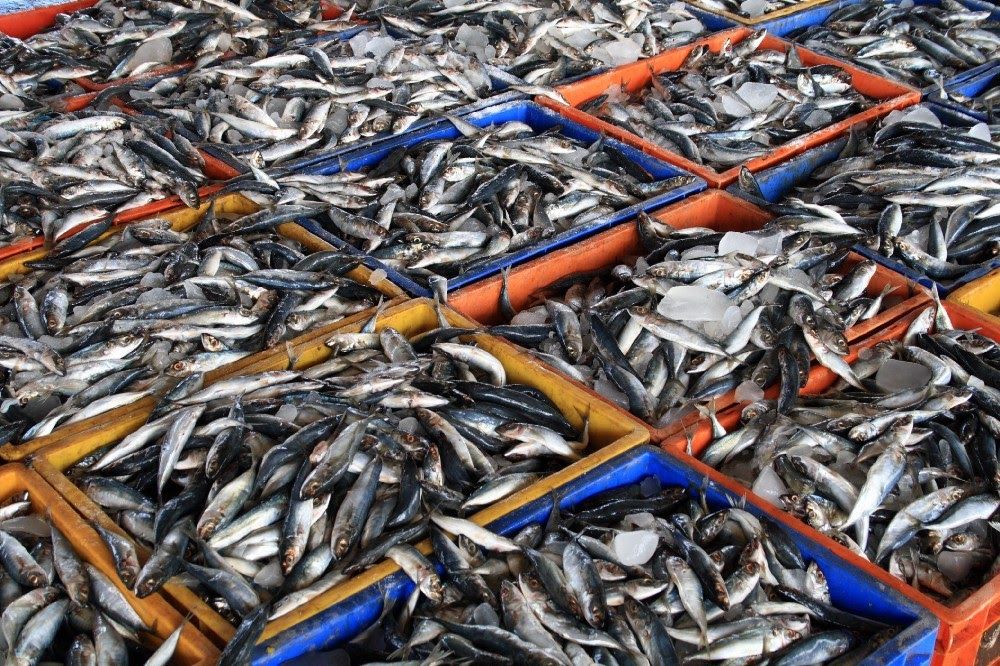
Speaking of which: the fact that it’s even possible to outstrip the carrying capacity of our ecosystem is, in part, a function of our currency supply being disconnected from the limits of the physical systems upon which the economy operates. Reconnecting these two phenomena is actually imperative for having a sustainable economy: if we don’t, we have no guardrails against outstripping the planet’s capacity to regenerate itself.
Mutual credit systems have a particularly seamless ability to connect to the carrying capacity of an economy, since the creation of currency can be strictly a function of spending into the negative by those who have demonstrated the ability to produce actual value, and the currency is backed by their future production of that value. Such a system also shifts the power away from the bankers who derive influence from their ability to create and charge for the money supply, allocating power instead to the value-creators themselves (those who are actually able to provide for people’s needs). Add in a triple-credit rating system and you bring greater good into the equation as well.
Imagine if the most powerful individuals on the planet were those who demonstrated the capacity to create the most benefit, rather than those who can extract the most resources.
It’s a good thing that we can imagine such a scenario, because this is exactly what it will take to tackle perhaps the most intractable problem we’re facing today.
4. Saving the Planet
The problem:
There are, of course, many human-caused problems related to our natural ecosystem. We are currently causing the sixth major extinction event in biological history, we are polluting the oceans and atmosphere beyond what may be reversible, and we are rapidly outstripping the carrying capacity of our ecosystem.
For the purpose of illustration, let’s narrow things down and focus on the destruction of the rainforests, which are clearly disappearing at a rate faster than they can renew [1] [2] [3]. Reasons appear to include narrow-minded policies in many tropical nations that are out of touch with the importance of rainforests to our planet’s health, along with the desirability of rainforest land for industrial farming and oil exploration.
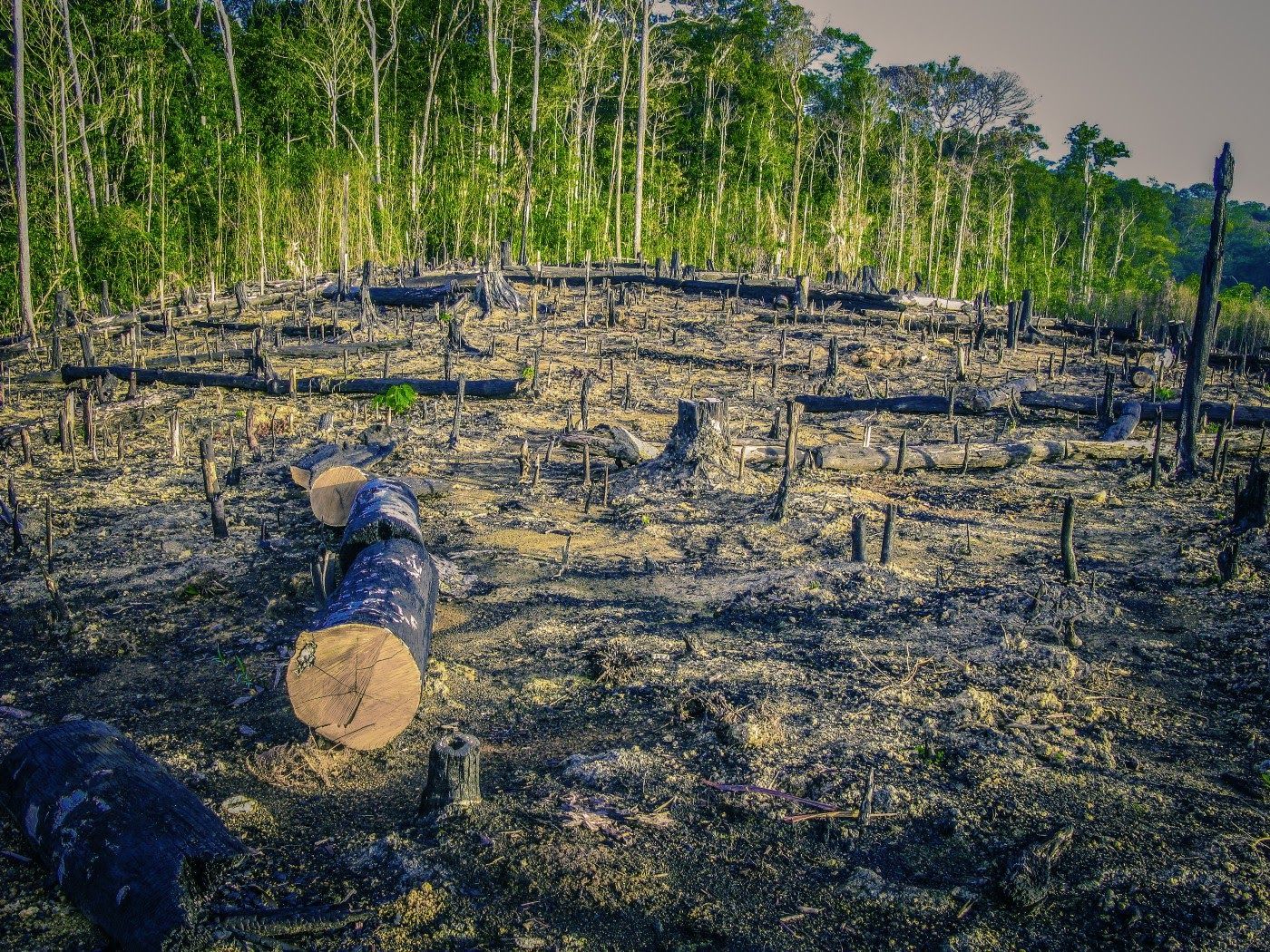
But what if…
… these are actually symptoms of a deeper cause: that our enclosable systems have led us to account for the value of rainforests in short-term and shallow ways, making it inevitable that their stewards would choose to liquidate them now versus reap their benefits over time?
What is the true value of an acre of rainforest? It may be difficult to place a number, but any true-value calculation would have to account for the myriad ways the forest contributes to the greater ecosystem (and the economy) by continuing to exist: the carbon storage that keeps the planet from overheating, the oxygen supply that keeps us breathing, the rare tropical hardwoods which might be harvested sustainably over time, the utility of plants as food and medicine, the biodiversity that took billions of years to evolve and helps sustain food chains worldwide.
But try comparing the value of a thousand chairs or ten thousand gallons of milk this year to the value of keeping a million tons of carbon out of the atmosphere over the next 100 years, or to the survival of a certain salamander species that could keeping eating bugs and being food for birds for millions of years. That’s a challenging task in any case, but it’s completely impossible when our financial systems account for only the most shallow and short-term benefits: X dollars for the lumber, Y dollars for the drilling rights, and Z dollars for agricultural leases.
Which means there’s (at least) two issues at play here, if we break things down. One is the oppressive time cost of money: it’s better to get $10M now than $20M over the next 20 years. The other is that financial accounting is an inadequate representation of wealth in a complex system. Without proper accounting for externalities, it’s inevitable that we continue to eat the world for profit, unsustainably extracting natural resources for their cash value.
An alternative future is possible.
We’ve already looked at mutual credit and triple-bottom-line currencies as ways to foster sustainability and positive feedback loops at the level of currency design. Both would help bring incentives more in line with rainforest preservation. Now we look at an approach one layer up: the ways that assets are owned and shared.
Sharing economies.
Is it necessary for us to outright own as much as we currently do? Is it beneficial?
For example: How many hours of use per year does the average suburban lawnmower see? Maybe an hour a week for part of the year? That means they sit idle more than 99.7% of the time… yet it’s typical to have one in every household, causing all manner of negative externalities through their manufacturing, raw materials, waste, and (often) indoor storage space. Conventional accounting celebrates the manufacturing, sale, and maintenance of all these lawnmowers as positive numbers in “the economy”, but there’s a bigger picture badly missed by that perspective. Can you imagine the massive net benefit if neighborhoods could easily coordinate their use of lawnmowers through a shared-ownership, shared-use system built on unenclosable carriers?
Expanding outward, cars also seem ripe for this kind of exploration, as do, say, many kitchens and laundry spaces. Maybe someday even land might not need to be individually owned, but rather commonly owned and privately leased. This is the basis of Georgist economics, or Georgism, which also imagines that lease-holders could reap benefits from improving the land and be taxed for extracting resources from the land.
But we don’t need to go full Georgist to imagine hybrid systems – ‘sharing economies’ – that would retain basic property ownership but still lead to more efficient use of resources. One version is a kind of land-weaving society in which owners permit the use of their property for a variety of beneficial purposes, using reputation and certification to authorize access. If I have a permaculture certification, for example, I might be invited to farm your land, perhaps for a fee or a share of yield, or maybe because it benefits you in other ways, like soil improvement or social rewards. Other certifications might permit me to sustainably harvest wood, gather food or medicinal herbs, hunt, or graze your livestock. “No Trespassing” signs could be replaced by technologically enabled “Enter Here” checkpoints, with RFID or smartphone-based tracking – and with micropayments transferring automatically in cryptocurrencies as agreed upon.

For a land-weaving type of approach to remain effective at any kind of scale, it would be critical that the systems for granting and tracking access — and for tracking reputations and certifications — be guaranteed to always remain fully decentralized, which means being built on an unenclosable carrier framework like Holochain.
The implications are game-changing.
What’s typical today is that only those who own or fully rent a piece of land can make much use of it. But this tight coupling of ownership and stewardship makes holding natural resources unlucrative as compared to liquidating them, due to the costs of ownership and the time cost of money. But we can begin to imagine how, if we decouple ownership from stewardship, the balance could tip such that growing the capacity of the land is more beneficial to the landowner than depleting it.
The closest analog we have today to what something like this might look like might be national parks, but these exist mainly as nature preserves reliant on government subsidies (and a bit of tourism revenue). As a result, they are subject to all the complications of centralized power, including lobbying, politically motivated government shutdowns, and even declassification from protected status by unilateral action.
In order to truly tip the balance such that stewarding a rainforest on an ongoing basis is more advantageous than destroying it for cash, multiple land uses need to be allowed to occur: not solely ecotourism, or harvesting edibles, or gathering medicinals or wood, but all of these and more, all gated through the appropriate membranes of access such as certifications, reputation systems, and fee structures.
And because each of these land uses are complex in their own right, it might not be one enterprise operating all of them, but various enterprises doing work within their zones of core competency, choreographing their operations with one another to maximize efficiency. For instance, the group permitted to harvest lumber might mark the trees they plan to cut down with three months’ notice, so that the gatherers could prioritize harvesting food, herbs, and other materials from those trees in particular. The type of coordination this requires is what makes unenclosable carriers so important: to whatever extent the coordination is channeled through central points of control, the system will corrupt over time, with power and money flowing to those who control the means of coordination.

Growing What’s Ours
Extrapolating from the idea of sharing economies, we might begin to completely reimagine what it means to solve for scarcity in general. As the naturalist Paul Krafel has pointed out in his enlightening (if productionally spartan) short film The Upward Spiral, there are basically two responses when faced with limited resources: one is to compete to maximize your own personal gain at the expense of others’, and the other is to act and interact in patterns that expand the amount of usable resources for everyone (including yourself).
We call the first strategy ‘get mine’, and we call the second ‘grow ours’. And what’s fascinating is that if you look across natural history, it’s ‘grow ours’ that evolution selects for over time, contrary to what we might infer from the ‘survival of the fittest’ narrative dominant within our cultural understanding of evolution (and in nature documentaries). Natural selection might actually be better understood as ‘survival of the fit’, as in “those whose characteristics are most fit for their environs are most likely to survive”. And a great way of being highly fit to one’s environs is to treat existing resources regeneratively, using the ones that exist to produce even more valuable resources.
Plants are great as this. They combine the abundant resources of sunlight, air, and water and produce all the carbon-sugars that comprise our planetary food chain. And look at how well that works out for them: they have literally spread to most of the surface area on earth, and they make up a vast majority of biomass on the planet. Carnivorous mammals, which need to employ more ‘get mine’ than plants to compete for limited food, are far more rare. But even they typically take only what they need, and not more than can be renewed, from their surroundings and from prey populations.

Growing ours is a good strategy in part because most of the resources we need to survive are actually renewable, meaning there’s an infinite supply if we treat them regeneratively. When we’re only competing against one another for how quickly we can extract those resources and short-term-profit from them, we outstrip the carrying capacity of the incredible engine of life that is our sun-fueled natural ecosystem, and the engine stops. On the other hand, when we take on a posture of enhancing the regenerative behaviors of ecosystems, the engine thrives, and so does humanity.
It’s not that ‘get mine’ is not useful in the right context and scale; individual agents within a market often need to compete for shares of a pie. But that’s precisely why it’s so critical that, at a collective level, we have feedback loops that check and balance our overall consumption, or else we’re just like a yeast colony that overconsumes its environment and causes its own demise. We must have systems that track our impact and make it visible, facilitate and reward the sharing of resources, and incentivize working together to leave the pie at least as big as we found it. And these systems must be built on unenclosable carriers or they will get hijacked again and again for the benefit of only a few, and the story plays out once more – different cast maybe, but same outcome.
A ‘Holocene Explosion’ of Social Organisms
Starting 541 million years ago, a remarkable thing happened: a period of just 20 million years gave birth to most of the biological diversity that exists today. It’s known as the Cambrian Explosion, and it was catalyzed by the information carrier known as DNA.
Here at the beginning of the 21st century, we are standing at the outset of a similar explosion, only this time, it’s social organisms, not biological ones, that are emerging. And it’s social DNA, not biological DNA, that is powering it.
Just as biological organisms are more than the sum of their cellular parts, with the whole living on as the cells die and are replaced, social organisms (or social patterns) are forms of collective coordination that live on beyond the participation of particular individuals. Corporations and governments are the most familiar examples, having dominated the human systems landscape for centuries, with religious groups, tribes, and all kinds of community structures also in the mix along the way.
Early challenges to that dominance began decades ago with experiments in more participatory ownership (such as different kinds of cooperatives) and more participatory governance (such as liquid democracies), but it’s really the ‘Web2’ era of user-generated content, with its social networks and online marketplaces, that kicked the explosion into higher (second?) gear.
Now, ‘Web3’ organisms like decentralized marketplaces and decentralized autonomous organizations (DAOs) use blockchain-based smart contracts to eliminate the need for corporate or government intermediaries entirely. Even though these new organisms end up giving power to new intermediaries (as we discussed in Part 1 of this series), they are still shaking the snow globe and enabling us to at least imagine a world without centralized power.
The aim of this article has been to hint at such a world. Mutual credit, peer energy exchanges, sharing economies… these are examples of the kinds of social organisms that might emerge in an era of truly peer-to-peer communication and collaboration, built on a system of unenclosable carriers. But there are so many more unknowns than knowns about this new era. When any two or two billion people can invent new ways of interacting, unfettered by anyone moderating their behavior without their permission, the DNA of social organisms evolves with unprecedented speed. New ideas are encoded and tried, with the most fit being refined, combined, iterated, and propagated.
It’s an explosion of new social organisms like we’ve never seen before, a complete reimagining of how humans interact and organize. We call it the Holocene Explosion, named for the current geological epoch, and it begins now.
Let’s tune in to one more thought experiment that might (barely) hint at the scope of something like this. Imagine you’re the CEO of a huge multinational corporation, and it’s your job to keep a pulse on the whole organization and to identify, diagnose, and resolve issues as they arise. Today, you get the information you need periodically in dense reports containing financial statements and other long-form statistics. The report has taken time to compile from all the different departments and field locations, so by the time you receive it it’s not very current. Plus it takes you time to read it, digest it into a mental model, and hopefully draw some kind of useful conclusions about the complex system the data represents.
But let’s say that this is the future, and you get your information very differently. What you’re looking at is not a 400-page report, but rather a nature scene depicted on a screen — maybe an aquarium of fish, a bit like the old screensavers. Each type of fish represents some part of the massive, complex system you’re managing, while the fishes’ behavior — like how fast or high they’re swimming, or how coordinated a school’s movements — represents some metric, interpreted and compiled by the sort of advanced intelligence that’s already available today.

What works so well about this scenario is not just that the data is delivered in real time, but also that it’s delivered in a format that is consistent with how the human perceptual system is designed to operate. You have on the wall in your office not paragraphs, charts, and graphs, but a simulated ecosystem acting as the real-time health monitor of a complex system, displayed in such a way that you can take in large amounts of information at a glance, millions of simultaneous data points even, by observing patterns among the fish or their environs: the rippling seaweed, the blooming algae, the bubbles, the water’s cloudiness, the current, the light. When something seems ‘off’, you open up an interface on your computer, click on the item of interest, and drill in for more information.
Imagine how effective you would be at taking the pulse of a system and adapting to it under these conditions.
Now imagine that it’s not just the CEO who has access to this monitor, but actually everyone in the company as well, in corners of their screens or on the walls in their departments, maybe with their views adapted according to what’s most relevant for their work. Now instead of only a few executives being responsible for managing everything, the whole is holding the whole. Everyone can see the system they’re impacting, feel a direct relationship to it, and problem-solve for its optimal health. Can you imagine how the spirit of ‘grow ours’ could spread across an organization if all the people who were actually doing the work to bring about change could see the effect of their activities on the system?
Now consider applying these kinds of feedback mechanisms to all manner of global conditions: intercontinental trade, harmony among peoples, and, yes, the health of rainforests, oceans, and the atmosphere. How much faster might we solve humanity’s most intractable problems if we were all seeing the impact of our collective action in real time? If we were problem-solving not through marching-in-the-streets social activism that tries to compel power brokers to act against their own economic interests, but rather by tapping into humankind’s collective creativity to invent new social and economic patterns that incentivize everyone to grow the whole?
What we’re talking about here is a quantum leap in coordinative capacity that doesn’t actually require a vast leap in technological capacity, at least not in the ‘high-tech’ sense. It’s more like the arising of language than advancements in nuclear fusion or space travel. Sure, there’s complexity in building an unenclosable framework for decentralized software applications, but the leap is mainly about arranging building blocks into new, more eloquent, more sustainable forms.
The fundamental technology needed, therefore, is a coordinative technology, one that facilitates the mashing up and remixing of components quickly and with as few barriers as possible. We need an efficient, tamper-proof, and resilient carrier for social DNA.
In the next and final article in this series, we look at how Holochain is designed to be just such a technology.

